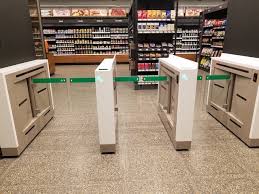Table of Contents
ToggleIntroduction
With the continuous advancement of technology, the innovative applications of Radio Frequency Identification (RFID) technology in the retail industry are attracting increasing attention. Its role in inventory management, anti-theft systems, and user experience, as well as its potential to improve retail efficiency and customer satisfaction, have been recognized and widely applied across various retail sectors.
Emerging Applications and Trends of RFID Technology
Smart Shelf Management
RFID technology can track product location and inventory status in real-time, helping retailers optimize shelf display and replenishment strategies, and improve product sales efficiency.
Unmanned Retail Stores
- For Customers: RFID technology, combined with automatic identification technology, enables the automated operation of unmanned retail stores. Customers can scan and pay for goods through RFID tags, providing a more convenient shopping experience.
- For Retailers: In addition to the three major systems of RFID access control, RFID product management, and smart cashier systems, unmanned convenience stores can also utilize facial recognition, self-service scanning, intelligent shelf systems, marketing interaction, and targeted advertising. Through cloud-based service platforms, standardized product services can be provided, achieving goals such as increased opening efficiency, reduced opening costs, and improved operational efficiency.

Smart Fitting Rooms
- For Customers: Smart fitting rooms interact with customers by reading information from the clothes being tried on. By recommending related product pairings, they increase sales of related items. Furthermore, they identify potential product improvements, improving product sales conversion rates. Ultimately, they facilitate marketing interaction with customers through mini-programs.
- For Retailers: Intelligent clothing racks collect product touch data, providing real-time feedback on product popularity. They also provide product pairing recommendations, increasing sales of related products. At the same time, they can identify areas for product improvement, leading to higher product sales conversion rates.
Impact of RFID Technology on Retail Operations
Inventory Management
RFID tags can be attached to each product, and RFID readers can be used to monitor inventory quantity and location in real-time. This reduces inventory errors, prevents product loss, improves the accuracy and efficiency of inventory management.
Loss Prevention
RFID technology can be integrated with anti-theft systems to track and prevent product theft by identifying tags. If anyone leaves the store with unpaid merchandise, the system triggers an alarm, enhancing retailer security and loss prevention.
Improved User Experience
RFID technology can help retailers provide personalized shopping experiences. By identifying tags, customers can access detailed product information, product recommendations, and promotional information, increasing user engagement and satisfaction.
Potential of RFID Technology to Enhance Retail Efficiency and Customer Satisfaction
Improved Inventory Accuracy
RFID technology can reduce inventory discrepancies and expired goods, helping retailers achieve efficient inventory management, reduce inventory costs, and minimize losses.
Optimized Replenishment Strategies
By monitoring inventory status in real-time, retailers can replenish out-of-stock items promptly, avoiding sales disruptions and improving both sales and customer satisfaction.
Enhanced Inventory Efficiency
Traditional inventory checks are generally time-consuming and labor-intensive. In contrast, RFID technology can quickly and automatically identify goods and calculate inventory quantities, saving time and labor costs.
Conclusion
Retail case studies and implementation strategies for RFID technology demonstrate its ability to reduce labor costs, improve accuracy, and provide a better shopping experience for customers. Ultimately, it helps the retail industry stand out in a competitive market.
